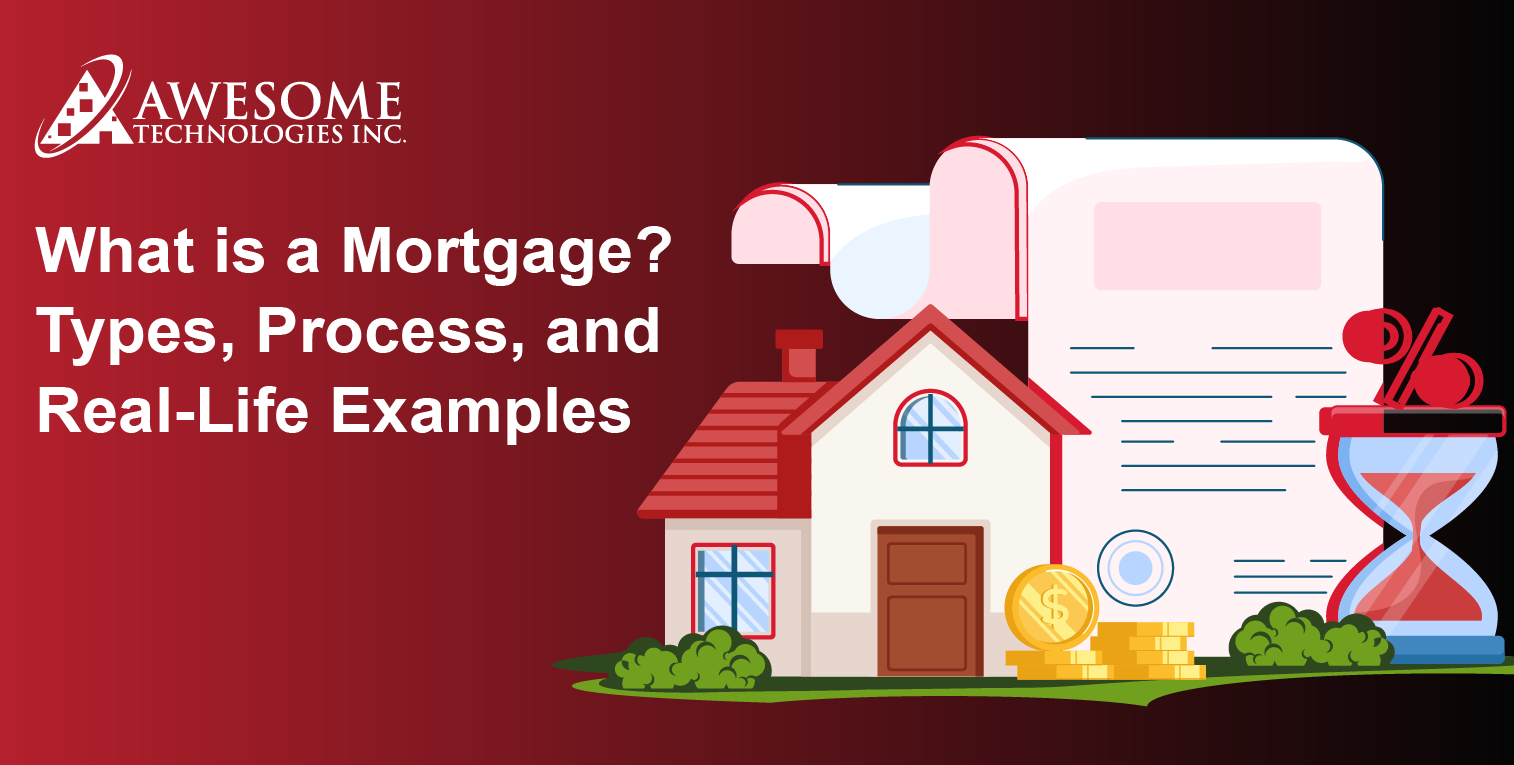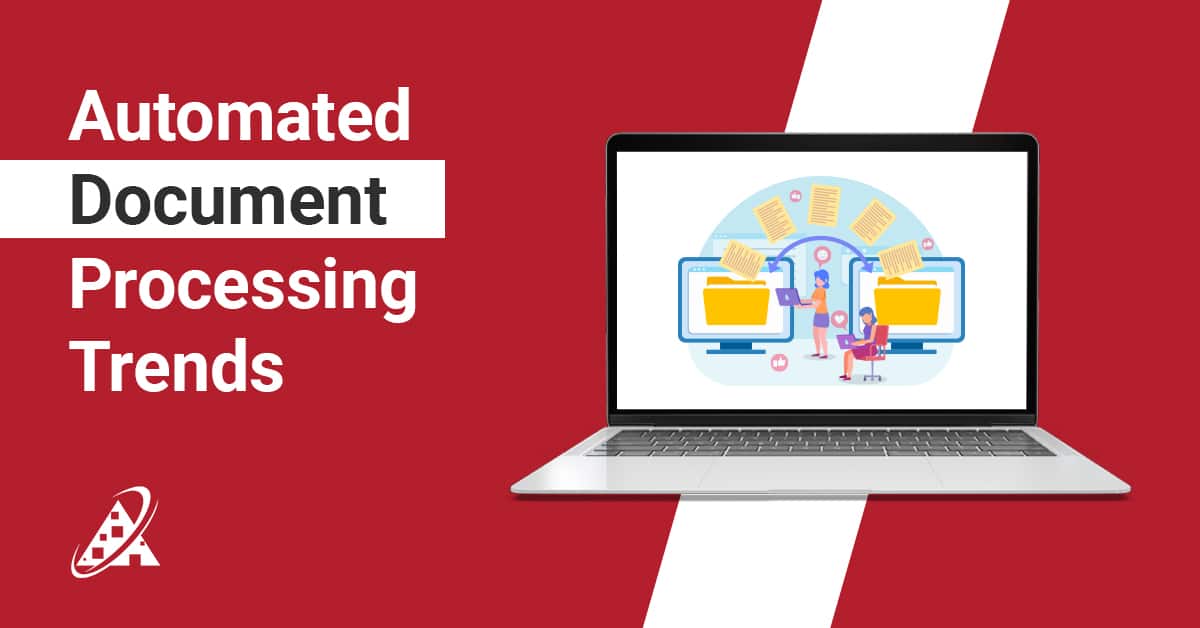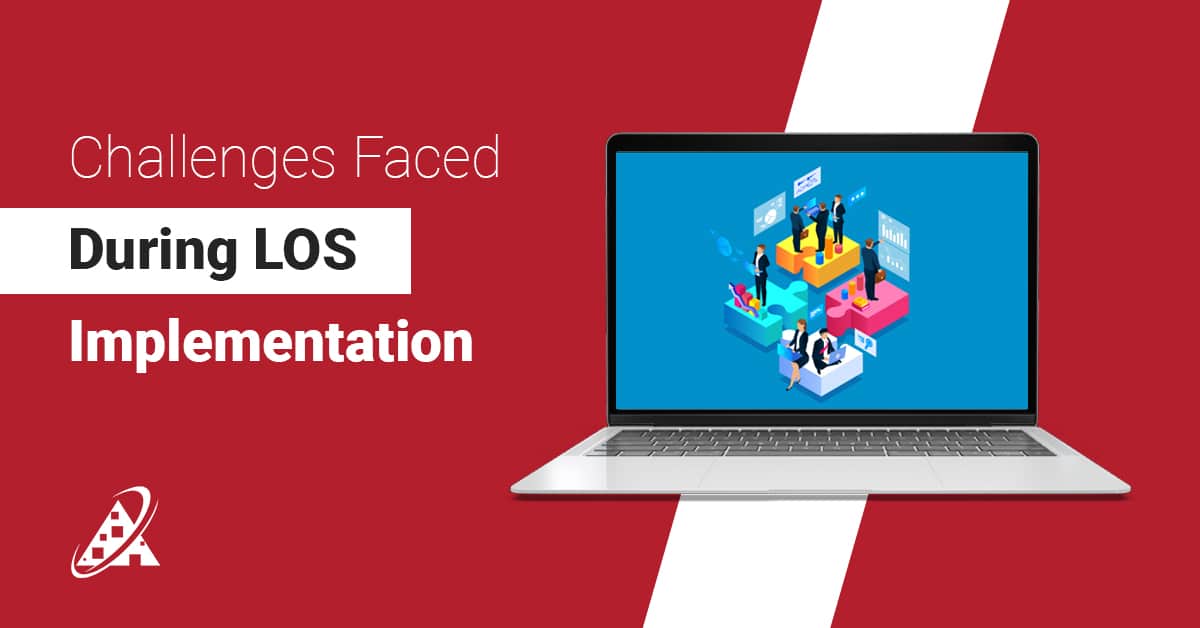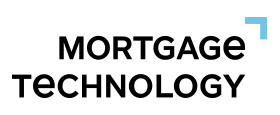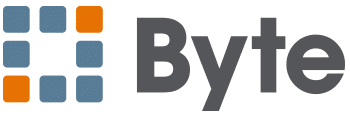Purchasing a home is one of the greatest milestones of our lifetime. It is emotional, exciting and often a little overwhelming. If you are a first-time buyer, planning your dream upgrade, or simply want to learn how buying works, there is one term that keeps popping up again and again.
But what is a mortgage, really? Is it just a fancy word for a loan? Or does it carry more weight, especially when you’re putting your future house on the line?
In reality, the mortgage meaning isn’t only for realtors or bankers anymore. It’s for anyone who dreams of owning a home, investing in property, or even building up generations of wealth. It is a commitment, a tool, beyond being a loan.
This blog will guide you from the basics of a mortgage loan through how a mortgage works, its types, and some everyday examples that make it all real. No jargon. No confusion. Simply a clear, professional explanation of something that affects the lives of millions.
Let’s begin from the beginning.
What is a Mortgage?
Fundamentally, a mortgage is a loan, but with one difference. Unlike a personal loan, a mortgage is tied directly to real estate. When you borrow a mortgage, you are borrowing funds to purchase a home, and as a condition, you’re allowing the lender to have the home itself as collateral.
That is, after all, where the money goes, so you’ll owe it back as a loan. And that is precisely how it works, meaning if the borrower stops making payments, the lender can legally take the house and sell it to recover the money. It’s a serious agreement, one that’s built on trust, responsibility, and legal safeguards.
So, when people ask, what is mortgage or search for the true mortgage definition, they’re asking: “What kind of financial commitment am I getting into?” And the answer is: one that’s long-term, strategic, and often necessary for homeownership.
In simple terms, the mortgage meaning is this:
“A loan used to purchase or refinance real estate, where the property itself serves as security.”
It’s the most common way people buy homes, not just in the US, but around the world. From cozy apartments to lavish country homes, mortgages make real estate dreams achievable.
What Is a Mortgage Loan?
Now that we understand what a mortgage is, let’s zoom in a little further because many people use the terms mortgage and mortgage loan interchangeably. And while they refer to the same financial agreement, there’s a small difference in how we use them.
A mortgage loan specifically refers to the money borrowed to purchase a property. It’s the actual loan contract between the borrower and the lender. The mortgage in finance world comes with interest rates, repayment terms, and conditions that vary based on factors like credit score, income, loan type, and location.
So, what is a mortgage loan, really? It’s the fuel behind your home purchase, the numbers, the paperwork, the interest, and the timeline all rolled into one powerful agreement.
Let’s say Sarah and Mike found their dream home. It’s priced at $300,000. They have $60,000 saved up. Instead of waiting two years to save the full amount, they apply for a mortgage loan for the remaining $240,000. After reviewing their income, credit score, and financial history, a bank approves the loan. That’s mortgage lending in action.
And that’s also how most people bridge the gap between saving and owning.
Home Loan vs. Mortgage
You might be wondering: “What’s the difference between a home loan and a mortgage? Are they the same?
In everyday conversations, yes, they’re often used in the same way. But technically, a home loan is the broader term for borrowing money to purchase a house. A mortgage is a specific type of home loan where the property is used as collateral.
So, every mortgage is a home loan, but every home loan is structured as a mortgage.
Understanding this difference helps when going through real estate documents, speaking with lenders, or comparing loan options.
How Does a Mortgage Work?
Understanding how a mortgage works is like lifting the curtain on one of the biggest financial tools of modern times. It might seem difficult at first, but once you see the complete picture, it is actually rather reasonable.
So, let’s break it down as though we’re sitting at a coffee table with a friend who just purchased a home.
– The Basics: How Does a Mortgage Work?
Imagine this: You find a house you love. It costs $250,000, but you only have $50,000 saved. Rather than waiting years to save the rest, you apply for a mortgage loan to cover the remaining $200,000.
You and the lender agree on a few key things:
- The loan amount (called the principal)
- The interest rate
- The repayment schedule (usually 15 to 30 years)
- The consequences if you stop paying (spoiler: you could lose the house)
The lender gives you the money to buy the house, and in return, you promise to pay them back with interest, month by month. If you don’t? The bank can legally take the house and sell it. That’s called foreclosure, and it’s why mortgage lending is taken so seriously.
That’s the real engine behind how mortgage loans work an agreement based on trust, responsibility, and a clear repayment plan.
– Who’s involved in a Mortgage?
There are many players involved that make the mortgage process function:
- Borrower: That is you, the person borrowing the loan
- Lender: Typically a bank, credit union, or mortgage company lending the loan.
- Loan Officer: Your friendly guide through the paperwork.
- Underwriter: The person reviewing your finances behind the scenes.
- Appraiser: They confirm the property’s value so the lender doesn’t overlend.
Understanding the roles of each is important for a smooth home mortgage lending experience.
– How Mortgage Payments Work
Each month, you make a payment that typically covers:
- Principal – The portion of your original loan amount
- Interest – The lender’s fee for loaning you money
- Taxes – Local property taxes, often included in the monthly bill
- Insurance – Both homeowner’s insurance and possibly mortgage insurance
This breakdown is referred to as “PITI” (Principal, Interest, Taxes, Insurance), a simple way to remember how your monthly payment is structured.
The earlier years of the loan mostly go toward interest. But as time passes, you start chipping away more at the principal, gradually owning more of your home.
– Can You Pay It Off Early?
Absolutely. Many borrowers choose to make extra payments towards their mortgage to save on interest over the life of the loan. However, some lenders may charge early payoff penalties, so it’s worth reading the fine print.
Early repayment is a common feature in stories of families who paid off their homes faster and built equity quicker, equity being the part of your home you actually own.
Real Talk: Why Understanding How a Mortgage Loan Works Matters
Let’s say your friend got a loan with a super low monthly payment. Sounds great, right? But 5 years in, the interest rates skyrocket. Suddenly, they can’t afford their payments. That’s what happens with adjustable-rate mortgages.
When you understand how mortgage loans work, you can make smarter decisions, like choosing between fixed and variable interest rates, or knowing when to refinance.
Types of Mortgage Loans
Now that we’ve understood how a mortgage loan works, it’s time to explore the different kinds available. Because not all mortgages are created equal, and choosing the right one can make a huge difference in your financial journey.
Whether you’re a first-time buyer, a military veteran, or someone looking for a second property, there’s likely a specific type of mortgage loan that fits your situation.
1) Fixed Rate Mortgage
This is the most popular and traditional option in the US mortgage market.
With a fixed-rate mortgage, your interest rate stays the same for the entire life of the loan, whether it’s 15, 20, or 30 years. That means your monthly payment won’t fluctuate, making git easier to plan your budget.
Best for: People who plan to stay in their home for the long haul and prefer financial consistency.
2) Adjustable Rate Mortgage (ARM)
An ARM starts with a lower interest rate than a fixed-rate mortgage, but that rate can change (adjust) after a set period, usually after 5, 7, or 10 years.
The benefit? You’ll likely save money in the early years.
The risk? Your payment could increase dramatically later on.
Best for: Buyers who don’t plan to stay in the home long and expect their income to grow significantly in the future.
3) FHA Loans
Backed by the Federal Housing Administration, FHA loans are designed for first-time homebuyers or those with less than perfect credit. They require a smaller down payment (as low as 3.5%) and are more forgiving with credit requirements.
Best for: Buyers with lower credit scores or smaller savings for a down payment.
4) US VA Loans
Reserved for veterans, active duty military, and certain members of the National Guard and Reserves, VA loans are backed by the U.S. Department of Veterans Affairs.
These loans come with no down payment, no private mortgage insurance (PMI), and competitive rates.
Best for: Military members and veterans who qualify for the benefit.
5) USDA Loans
Offered by the U.S. Department of Agriculture, USDA loans are aimed at buyers in eligible rural and suburban areas. They come with zero down payment and favourable terms.
Best for: Buyers in rural areas with moderate to low income.
6) Jumbo Loans
When you’re buying a high-value home, one that exceeds conforming home limits set by Fannie Mae and Freddie Mac, you’ll need a jumbo loan.
These loans come with stricter credit requirements and higher interest rates, since lenders are taking on more risk.
Best for: Buyers purchasing luxury or high-priced real estate.
Each type has pros and cons depending on your goals, finances and how long you plan to stay in the home. And this is where good information on mortgages really pays off, because choosing the right type can save you thousands of dollars in the long run.
The Mortgage Process: Step by Step
Getting a mortgage can feel like a big leap, and honestly, it is. But when you break it down step by step, it starts to feel less intimidating and more like a checklist you can confidently work through.
Let’s walk through the real estate mortgage journey, from the first “I’m thinking of buying” moment to the day you get the keys in your hand.
1) Pre-Approval: The Green Light to Start Dreaming
Before house hunting, you’ll want to get pre-approved. This is where a lender looks at your income, credit history, debts, and savings to figure out how much they’re willing to lend you.
Think of it like this: You are not shopping blind anymore. You know your budget, your options, and what’s realistically within reach. This step also shows sellers you’re serious and that gives you an edge.
Plus, pre-approval helps answer that lingering question: How does a mortgage loan work for someone like me?
2) House Hunting: The Fun (and Emotional) Part
Now the real excitement begins. Whether you’re scrolling listings at midnight or touring open houses on weekends, this is where dreams meet reality.
During this phase, you’ll probably hear the word “real estate mortgages” tossed around a lot. That’s because sellers and agents often want to confirm that buyers are financially backed and that means working with someone who has their mortgage loan situation sorted.
3) Making an Offer: This Is the One
You found the one. You’re picturing the couch in the corner, family dinners in the kitchen, maybe even a dog in the yard. It’s time to make an offer.
Once accepted, the deal becomes “pending”, and that’s when the mortgage work really kicks into high gear.
4) Loan Application & Paperwork Galore
Even if you’ve been pre-approved, now comes the full loan application. Be prepared to hand over a mountain of documents: tax returns, pay stubs, bank statements, and possibly a list of every financial decision you’ve made since high school (okay, not really, but it feels like it)
Behind the scenes, the lender is confirming your ability to repay the loan. This is where the underwriter steps in to analyse everything, and where all that mortgage in finance lingo starts coming to life.
5) Home Appraisal & Inspection: Is It Worth It?
The lender wants to make sure the home is worth what you’re paying for. That’s where an independent appraiser comes in.
At the same time, you’ll also schedule a home inspection to check for any major issues like foundation cracks, roof damage, or that mysterious smell in the basement.
This step protects both you and the lender, it’s a double safety net in the mortgage lending process.
6) Underwriting: The Waiting Game
This is the part where things go quiet. Your lender is now reviewing everything under a magnifying glass.
Don’t panic if they ask for additional documents (like a letter explaining a random deposit in your account), it’s all part of how mortgage loans work today.
7) Closing: The Final Countdown
Once the lender gives the final “thumbs up”, it’s time to close the deal. You’ll meet with your agent, the seller and maybe a lawyer or title agent. There’ll be a lot of papers to sign, but at the end of it all?
You get the keys. The house is yours.
And just like that, the mortgage process goes from a mountain of paperwork to a brand new front door with your name on the mailbox.
Real-Life Mortgage Examples (Stories That Make It Real)
We’ve talked about what is a mortgage, the process, and the types, but nothing brings it to life quite like seeing it happen in the real world. These aren’t hypothetical situations. They’re actual people, with real homes, navigating the same steps you might one day face.
Case 1: Chrissy Teigen & John Legend’s Beverly Hills Mansion Purchase
Even celebrities go through the mortgage process, through on a different scale. In 2020, model Chrissy Teigen and musician John Legend purchased a $17.5 million mansion in Beverly Hills. Despite their wealth, they reportedly financed part of the property using a mortgage loan, which is not uncommon even for high-net-worth individuals.
This example highlights an important truth: Mortgage in finance is used by a wide spectrum of buyers, not just those who can’t afford a pay cash, but even those who could. Why? Because mortgages often make better financial sense, offering liquidity for other investments.
It is a clean example of how mortgage loans work as a tool of finance, rather than just a necessity.
Case 2: Zillow’s Home Flipping Gone Wrong (2021)
Zillow, the housing giant, set out to get into the home flipping business by launching Zillow Offers. They bought thousands of homes, many using real estate mortgages, as financing with the plan to resell them for a profit.
But by late 2021, the company revealed that it had paid too much for homes in fast moving markets and couldn’t sell them, causing a loss of $500 million loss. They eventually closed down the program.
This case highlights the dangers of mortgage lending at scale as well as the effect of outside market forces (such as increasing interest rates or slowing markets) on even the largest players. It further highlights the significance of learning how a mortgage work, not only for individual purchasers but for companies as well.
Case 3: USDA Loans Helping Rural Homebuyers in the Midwest
In 2023, the U.S. Department of Agriculture released information that revealed that more than 150,000 rural American families purchased homes through USDA-backed loans. These home mortgage lending programs target low to moderate-income homebuyers and often provide zero down payment choices.
For example, a school teacher in rural Iowa purchased a $160,000 home with a USDA loan. Her monthly payment? Less than $1,000 including taxes and insurance.
This is a wonderful real-life answer to “what is a mortgage loan” for so many Americans. It is access, opportunity, and a way toward stability.
Case 4: Elon Musk’s $61M Mortgage Strategy
Yes, even Elon Musk uses mortgages. In 2018, he reportedly took out five mortgage loans totalling $61 million on several properties in California, despite being one of the world’s richest people.
Why would someone with billions in the bank borrow money? Strategic leverage. Musk, like many savvy investors, used low interest rates to free up capital for higher-yield investments elsewhere.
This story pushes the definition of what is mortgage lending beyond homes, into the world of wealth strategy.
Why These Stories Matter?
From celebrity homes to quiet farms in lowa, the common thread is this: mortgage and types of mortgage are deeply woven into real lives.
Whether it’s financing a dream home, making a risky investment, or leveraging a loan to scale wealth, mortgage in USA isn’t a one size fits all deal. These stories show the possibilities, the risks, and the decisions behind every signature on the dotted line.
Home Loan vs. Mortgage: What’s the difference?
You’ve probably heard the terms “home loan” and “mortgage” used interchangeably. And while they do overlap in many ways, they’re not exactly twins, more like cousins who hang out a lot. So, let’s break down the difference in a way that sticks.
The Core of It: What is a Mortgage Loan?
A mortgage loan is a specific type of loan used to purchase real estate, whether it’s a house, condo, or investment property. The key element that defines a mortgage is that it’s secured by the property itself. That means if the borrower doesn’t repay, the lender has the legal right to take ownership of the property through foreclosure.
So, when someone asks, “What is a mortgage loan?” or “What is mortgage?” this is the simplest definition: it’s a loan where the property is the collateral.
What About a Home Loan?
Here’s where it gets interesting: all mortgages are home loans, but not all home loans are mortgages.
A home loan is a broader term. It includes:
- Mortgages (to buy property)
- Home equity loans (borrowing against your home’s value)
- Home improvement loans (unsecured or secured loans to renovate)
- Bridge loans (short-term loans when buying a new home before selling the old one)
So when someone says, “How does a home loan work?” They could be talking about a few different things, not just a traditional mortgage.
The Legal Angle
From a mortgage in finance perspective, the word “mortgage” isn’t just a loan, it’s a legal agreement. It includes documentation, liens, and transfer rights, which is why the term often comes up in legal and real estate contracts.
A home loan, on the other hand, is a more general banking term used by lenders and borrowers alike. It refers more to the act of borrowing money to buy or renovate a house.
Why Does the Confusion Exist?
Honestly? It’s because in the U.S., most people only experience one kind of home loan in their lives: a traditional mortgage. That’s why they use the terms interchangeably.
But for clarity, especially when dealing with lenders, agents, or mortgage brokers, knowing the difference between a home loan vs. mortgage can save you from signing up for the wrong product or misunderstanding the mortgage loan definition entirely.
How Does a Mortgage Loan Work in the USA?
By now, you’ve got a solid grip on the basics, but let’s zoom in on one specific angle: how does a mortgage loan work in the USA from a financial, legal and cultural standpoint.
Understanding the US mortgage landscape helps make sense of why homeownership works the way it does here and how mortgage lending supports the real estate market.
The Structure of Mortgage Lending in the US
In the U.S., the mortgage lending system is built around both private lenders and government-backed institutions like:
- Fannie Mae (Federal National Mortgage Association)
- Freddie Mac (Federal Home Loan Mortgage Corporation)
- Ginnie Mae (Government National Mortgage Association)
These agencies don’t directly give out loans. Instead, they buy mortgages from lenders, bundle them into mortgage-backed securities and sell them to investors. This keeps money flowing to banks and credit unions so they can keep lending.
Credit, Income & Risk Assessment
American lenders heavily rely on FICO credit scores, debt-to-income ratios, and employment verification to determine eligibility. Even though platforms and Mortgage Software Development tools have made applications faster, human judgment still plays a role.
Real Estate Mortgage in a Global Context
While the U.S. mortgage system is mature and diverse, it’s unique in some ways:
- 30-year fixed-rate mortgages are rare in many other countries.
- Government backing via FHA, VA, and USDA loans is a key safety net.
- Foreclosure laws vary by state, some use judicial processes, others don’t
This structure gives American borrowers a wide menu of choices but also demands a clear understanding of how the system operates.
What This Means for You
Understanding how mortgage in finance works on both a personal and systemic level makes you a smarter borrower. Knowing how home mortgage lending operates gives you the power to ask better questions, spot red flags, and ultimately secure the best deal possible.
Conclusion:
To put it simply, a mortgage is a loan that helps you buy a home, but it’s also a long-term financial commitment. From understanding the mortgage meaning to exploring the types of mortgage loans, you now know how the pieces come together, from lenders and credit scores to monthly payments and homeownership.
Knowing how mortgage loans work can help you make smarter choices, and while the mortgage in USA system offers many paths, the best one is the one that aligns with your needs, budget, and future goals.
In the end, a mortgage isn’t just about buying property, it’s about investing in your future with clarity and confidence.

